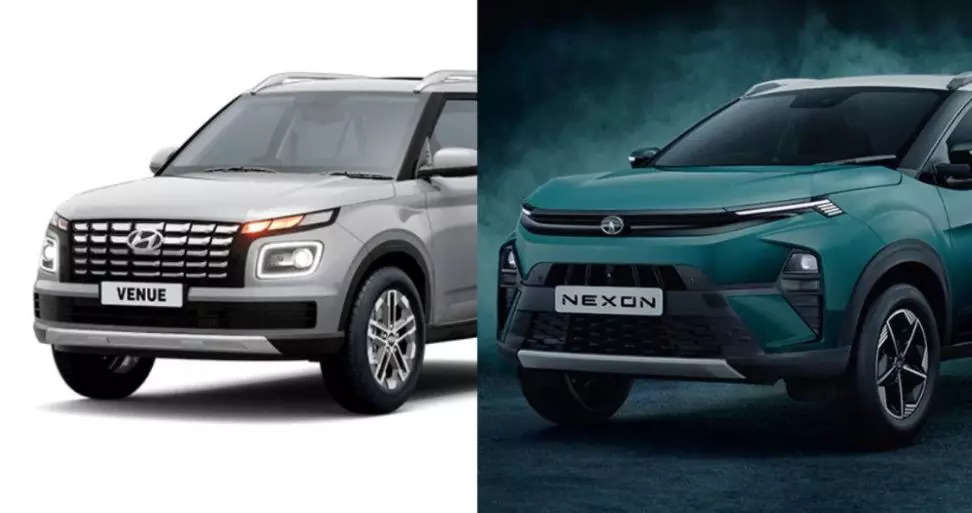
The compact SUV segment in India has seen tremendous growth in recent years. With improved infrastructure and gradual urbanisation, many first-time buyers opt for a practical compact SUV over traditional sedan or hatchback models.
Within this competitive space, two proven names continuously battle it out for supremacy – the Tata Nexon and Hyundai Venue. Both have carved a niche for themselves by offering compelling value propositions.
But which one comes ahead when their attributes are evaluated side-by-side? Let’s analyse their key strengths and weaknesses across various factors to find which brand provides better value for money.
The competitors: Tata Nexon and Hyundai Venue
The Tata Nexon was one of the earliest movers to establish the homegrown compact SUV segment in India. An appealing exterior design, a long list of features, and respectable driving dynamics helped reinvigorate Tata’s brand image and performance in the passenger vehicle market.
Hyundai entered the scene with Venue, bringing its proven global SUV development expertise. Though not the inventor of this niche, the Venue was targeted at customers valuing Hyundai’s quality, refinement, and premium ownership experience.
Nexon’s Bold New Look vs. Venue’s Sophistication
Let’s first analyse their exterior designs. The Nexon’s latest update has injected a liberal dose of dynamism into its looks. Its matrix-style headlamps, L-shaped LED DRLs, and prominent wheel arches endow it with a great road presence. From any angle, there’s no missing the heavily masculinised proportions aimed at enthusiasts.
In comparison, the Venue car takes a subtler approach focussed more on premiumness than aggression. Its wider parametric grille flanked by arrowhead LEDs gives it a sophisticated mien. Sleek character lines along the profile highlight the attention to detail over brash statements. Subjectively, both succeed in their rights.
Specifications Showdown
Let’s check out what’s under the metal now. Engine specifications remain familiar – 1.2L/1.5L petrol/diesel mills on both. While identical on paper, tune and chassis differences result in the Nexon feeling slightly more eager to rev.
Ride quality proves outstanding from both manufacturers. Safety again goes in Tata’s favour, with the lone 5-star G-NCAP rating achieved by Nexon early on. However, in-cabin tech sees Hyundai pulling ahead via features like air purifiers and over-the-air updates fitment even on lower Venue variants.
Practicality metrics provide an even assessment, too. Boot capacity remains competitive, with occupants up front and rear finding leg, head and shoulder room sufficient. Ground clearance exceeds basic needs on city/highway roads.
Comparison of Engine Performance
While specifications appear similar at first glance, driving the two reveals subtler variances between their engine-gearbox combinations that colour the driving dynamics.
The Nexon’s 1.2L turbo-petrol stands out for its meaty low-end urge and versatility across varying loads/revs, thanks to a well-mannered AMT. Its 1.5L diesel also exhibits great push with linear power delivery up to the redline.
On dynamics, the Nexon translates its meatier outputs to offer a greater handling feel via quick and linear direction changes. Body control also impresses. Ride quality remains plush on both. While neither is meant as a driver’s toy, the Nexon edges ahead here.
Fuel efficiency
The mileage figures as per ARAI tests:
●Nexon Petrol AMT – 17.18km/l
●Venue Petrol MT – 18.5km/l
●Nexon Diesel MT – 22.40km/l
●Venue Diesel MT – 23.40km/l
Real-world results may vary, but numbers put the Nexon diesel and Venue petrol on par. The Nexon’s automated gearbox also squeezes out slightly better mileage. Overall, operating costs stay neck-to-neck despite engine differences.
Space, Practicality, and Pricing
Both the cars prioritise functionality for family use over outright spiritedness. In terms of cabin room, the Nexon’s larger boot (382L vs 350L) makes it marginally more accommodative for long trips.
However, it’s in pricing where the Nexon Price truly flexes its bargaining power over the Venue. Its base petrol variant undercuts Hyundai’s by INR 1 lakh, translating to potential long-term savings on maintenance and insurance costs proportionately.
(Disclaimer – The above content is non-editorial. TIL hereby disclaims any and all warranties, expressed or implied, relating to it and does not guarantee, vouch for or necessarily endorse any of the content.)
















